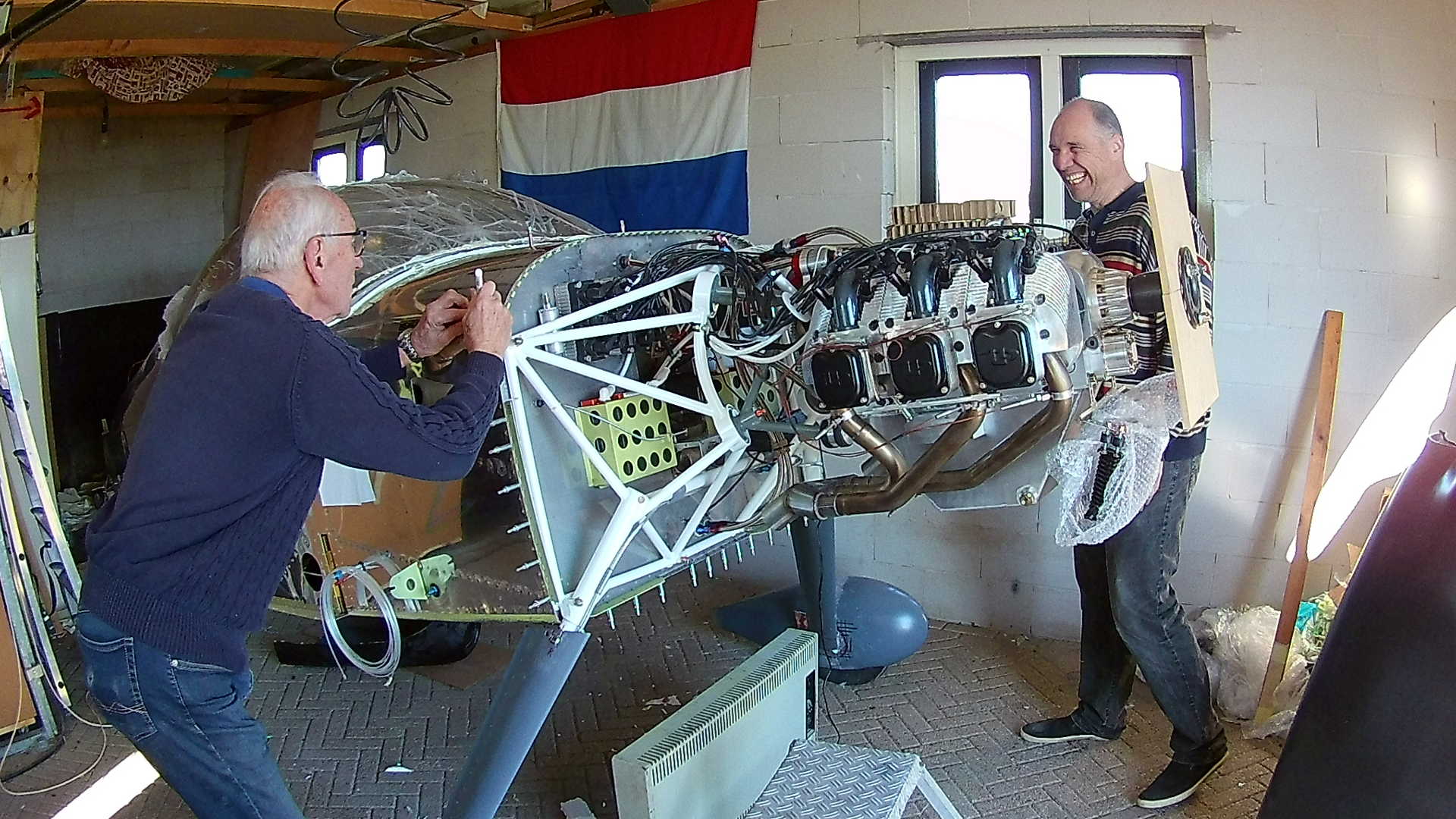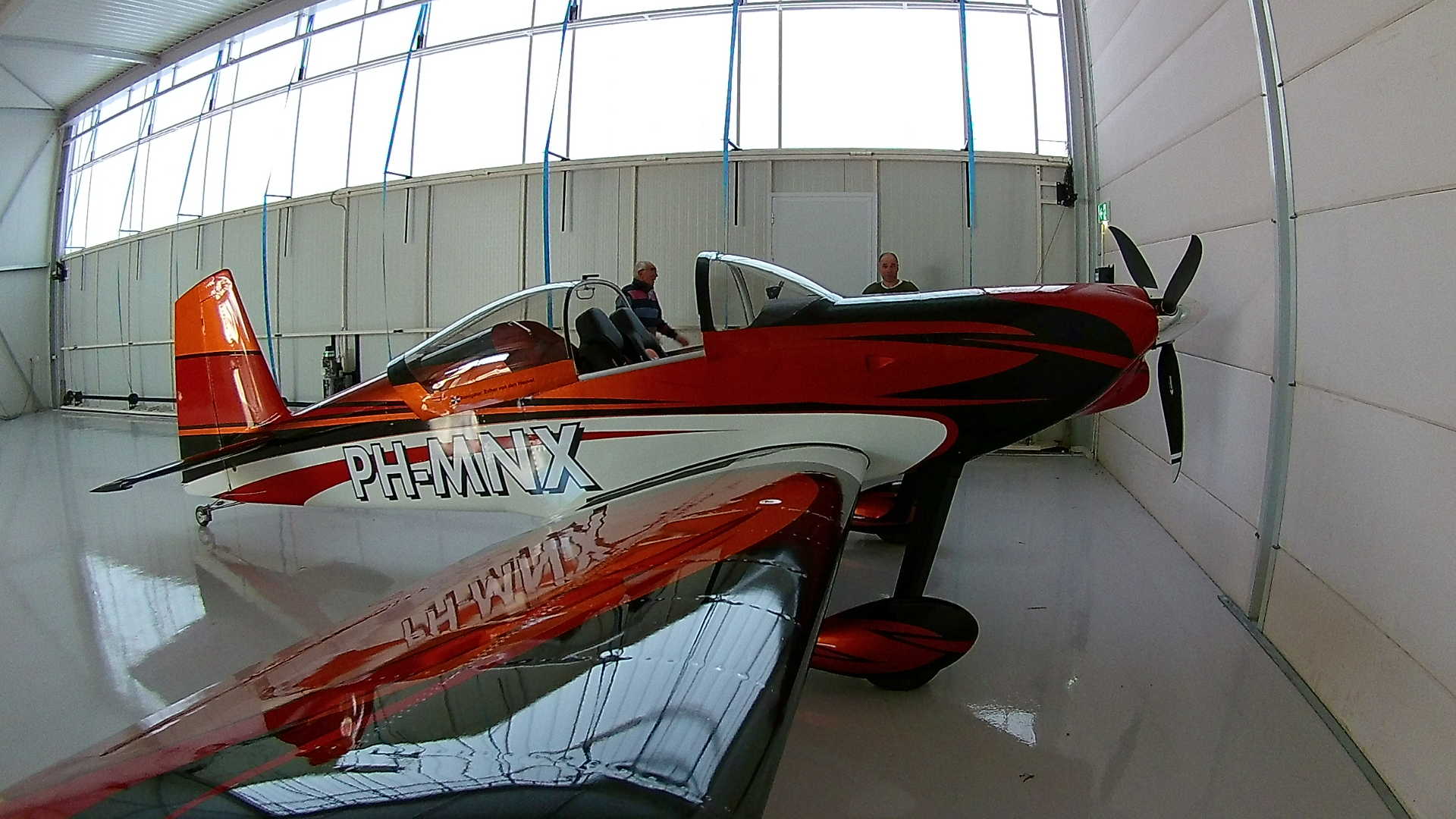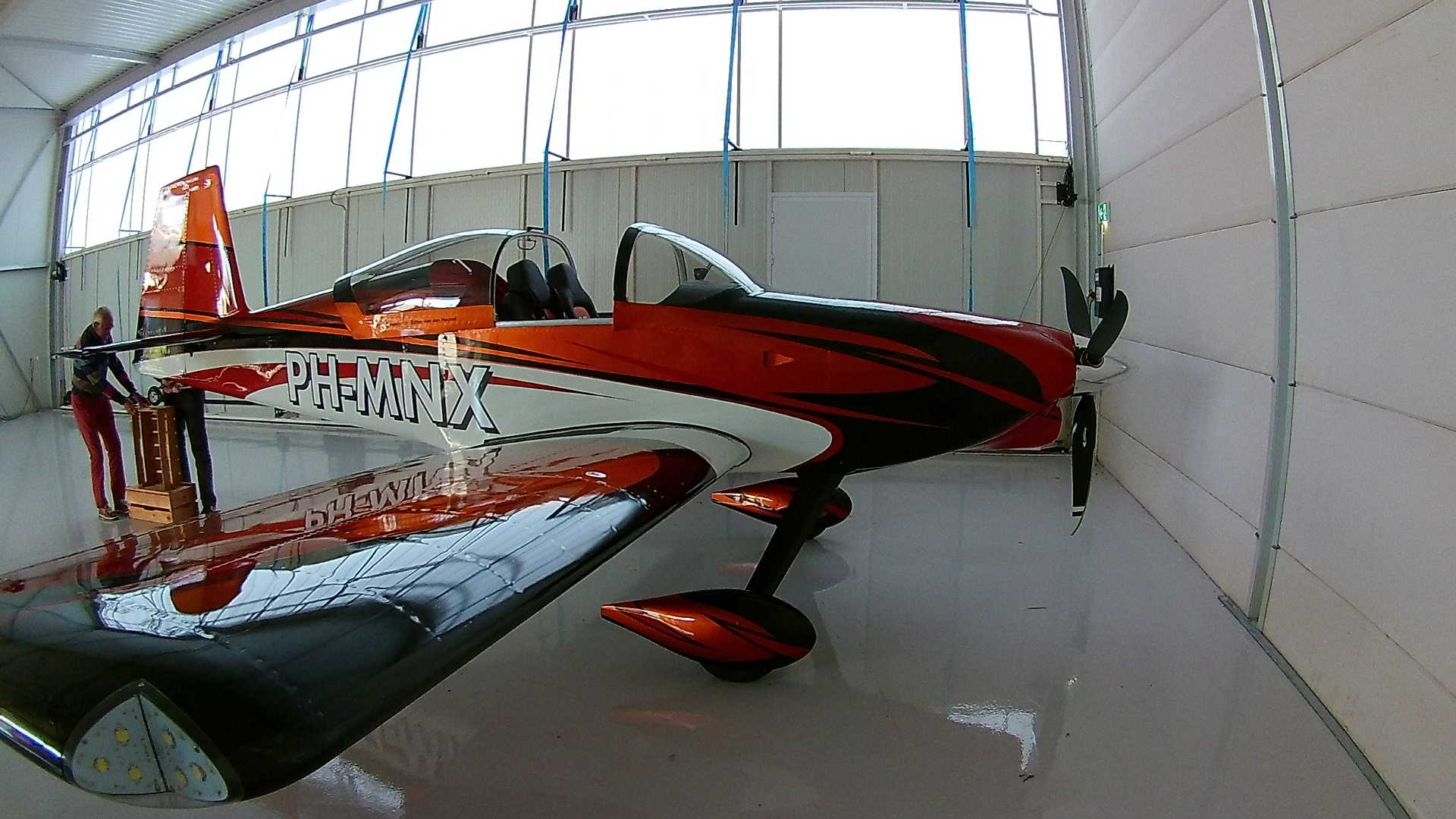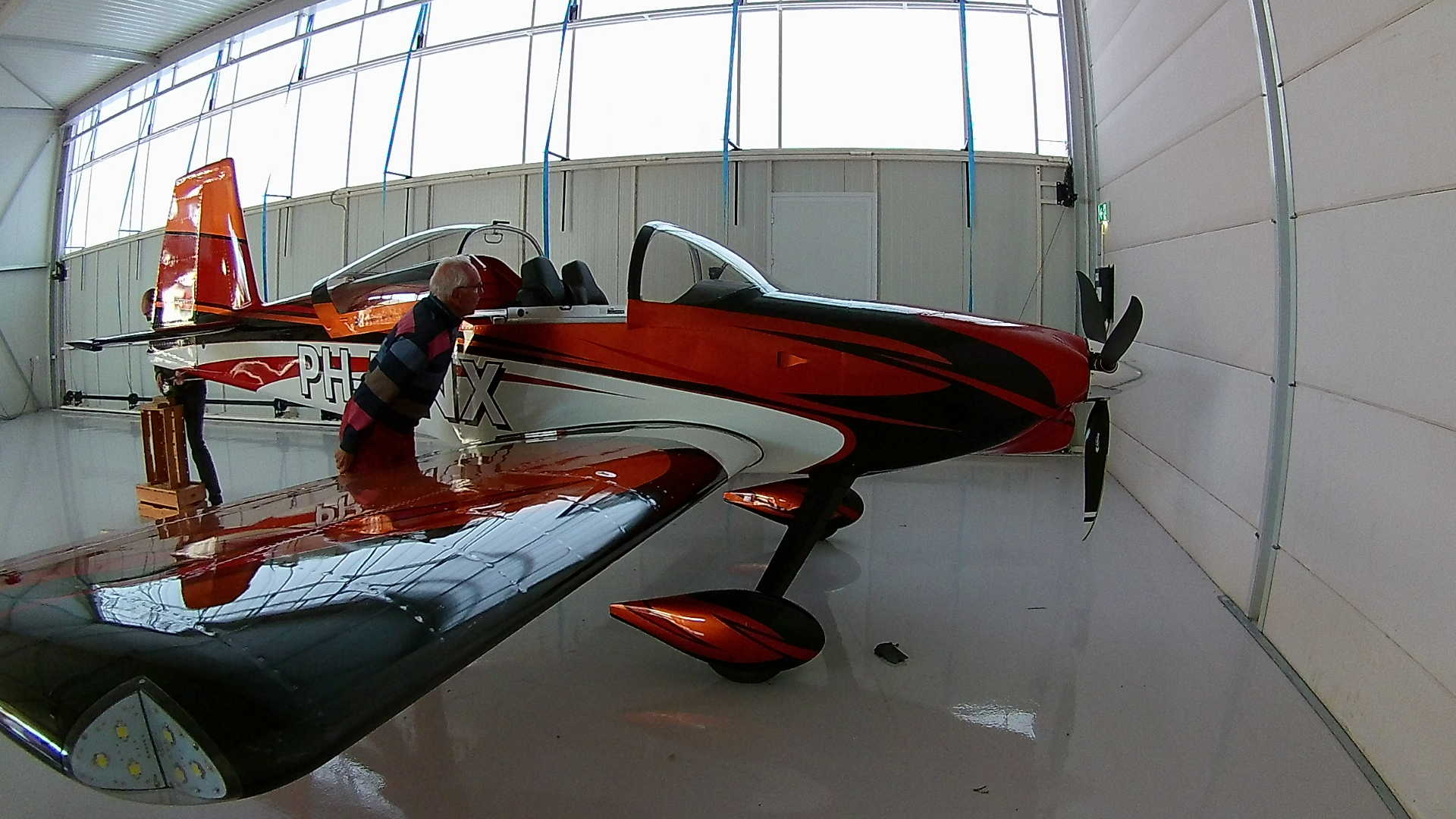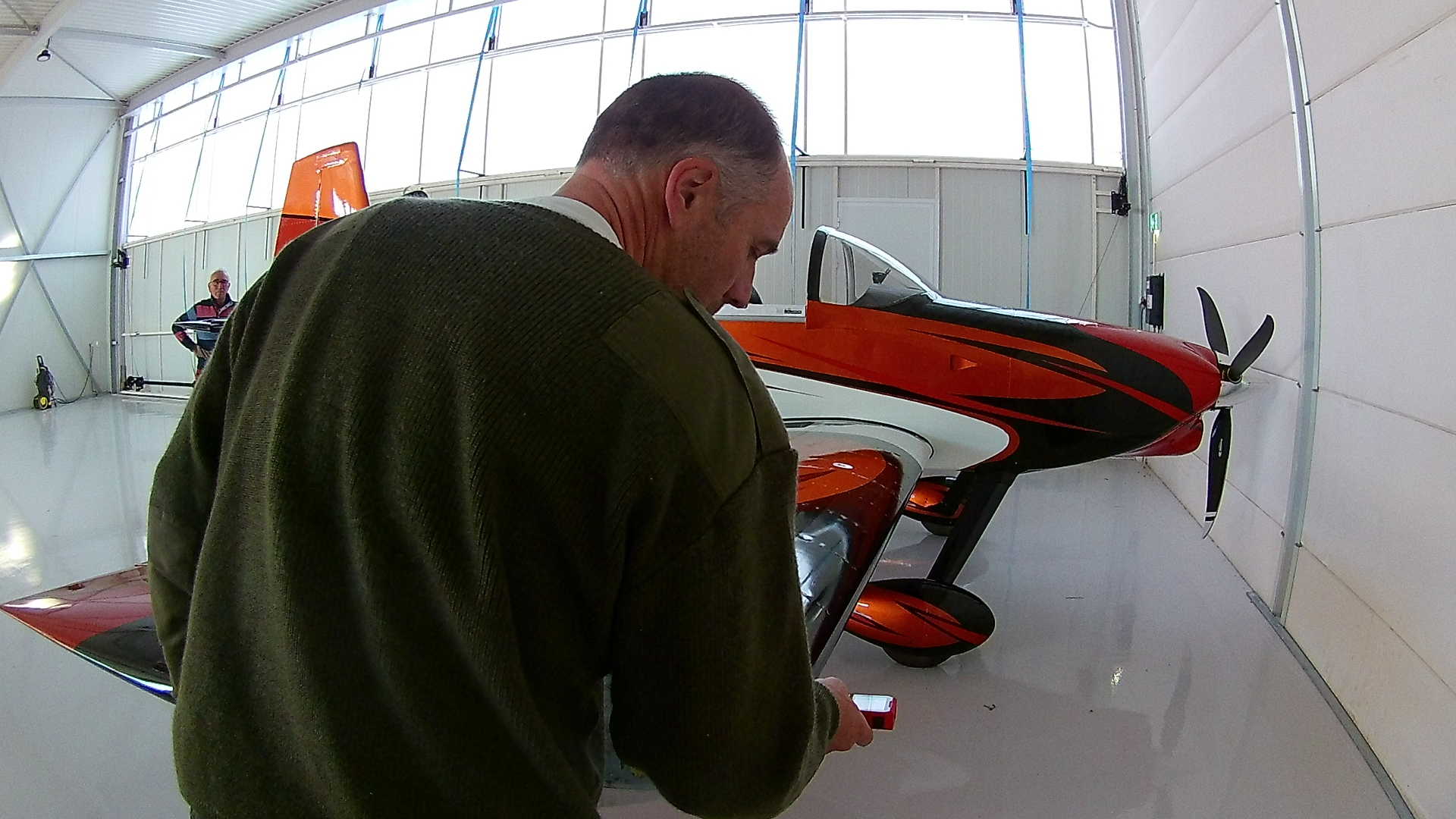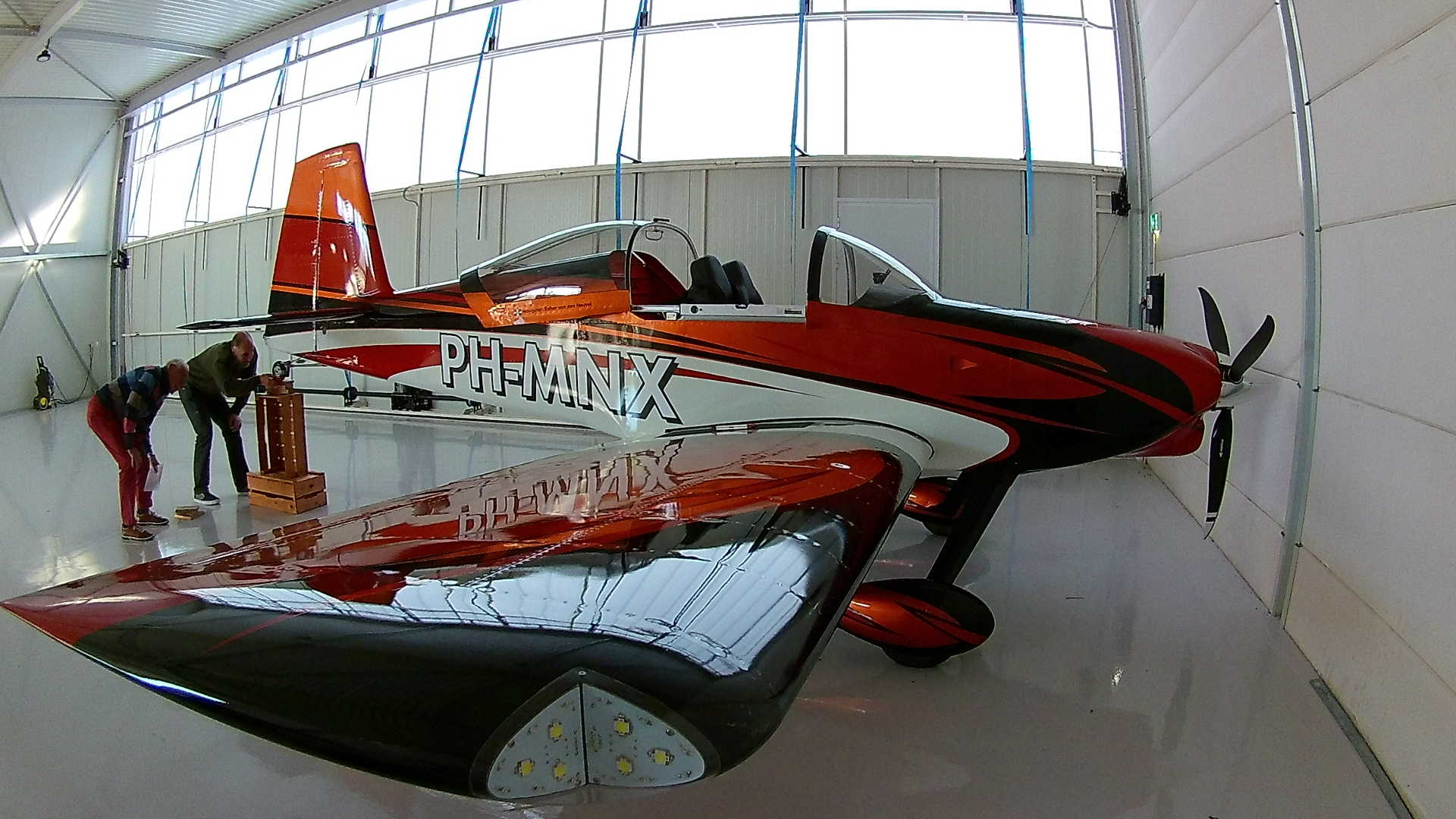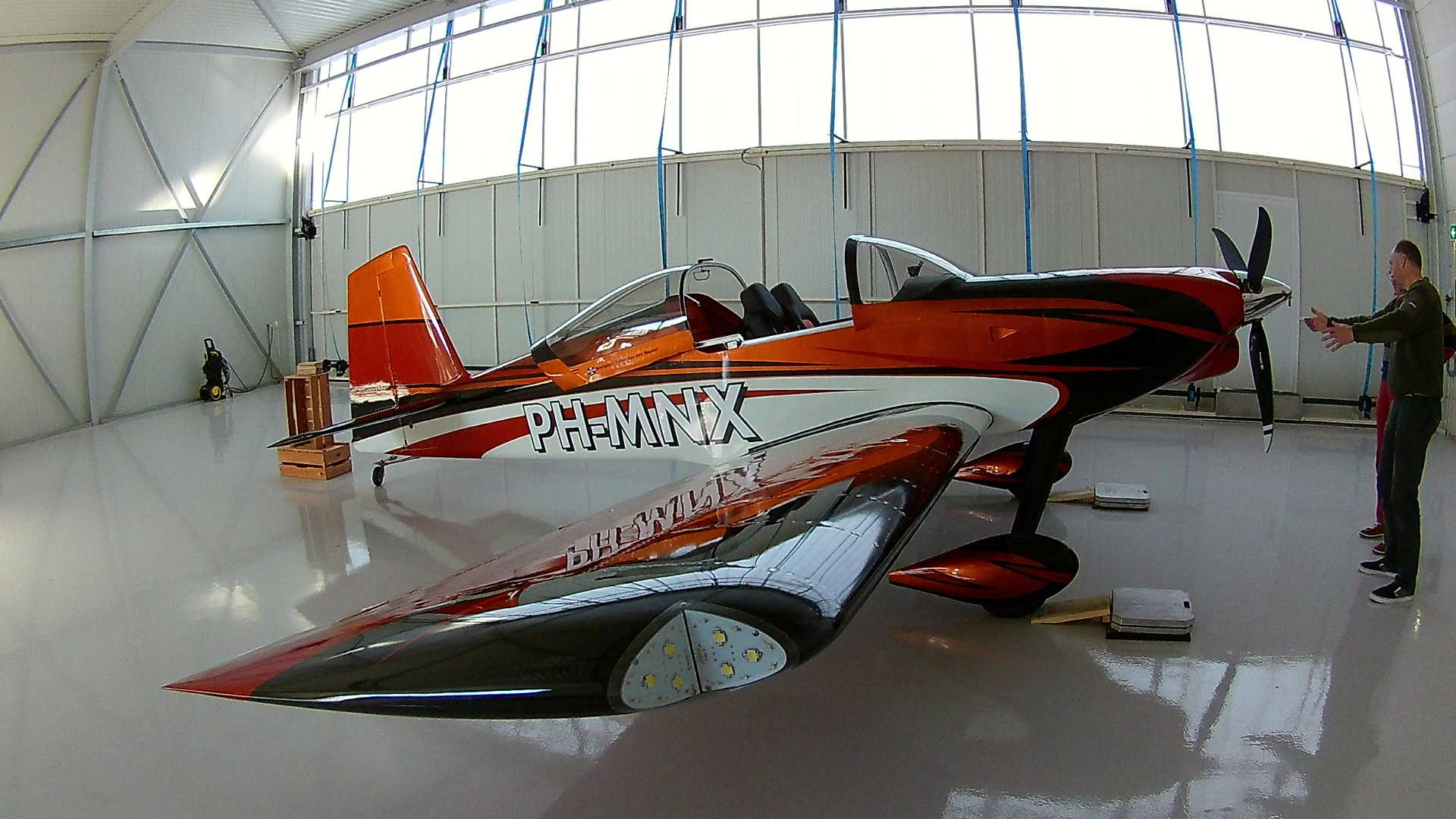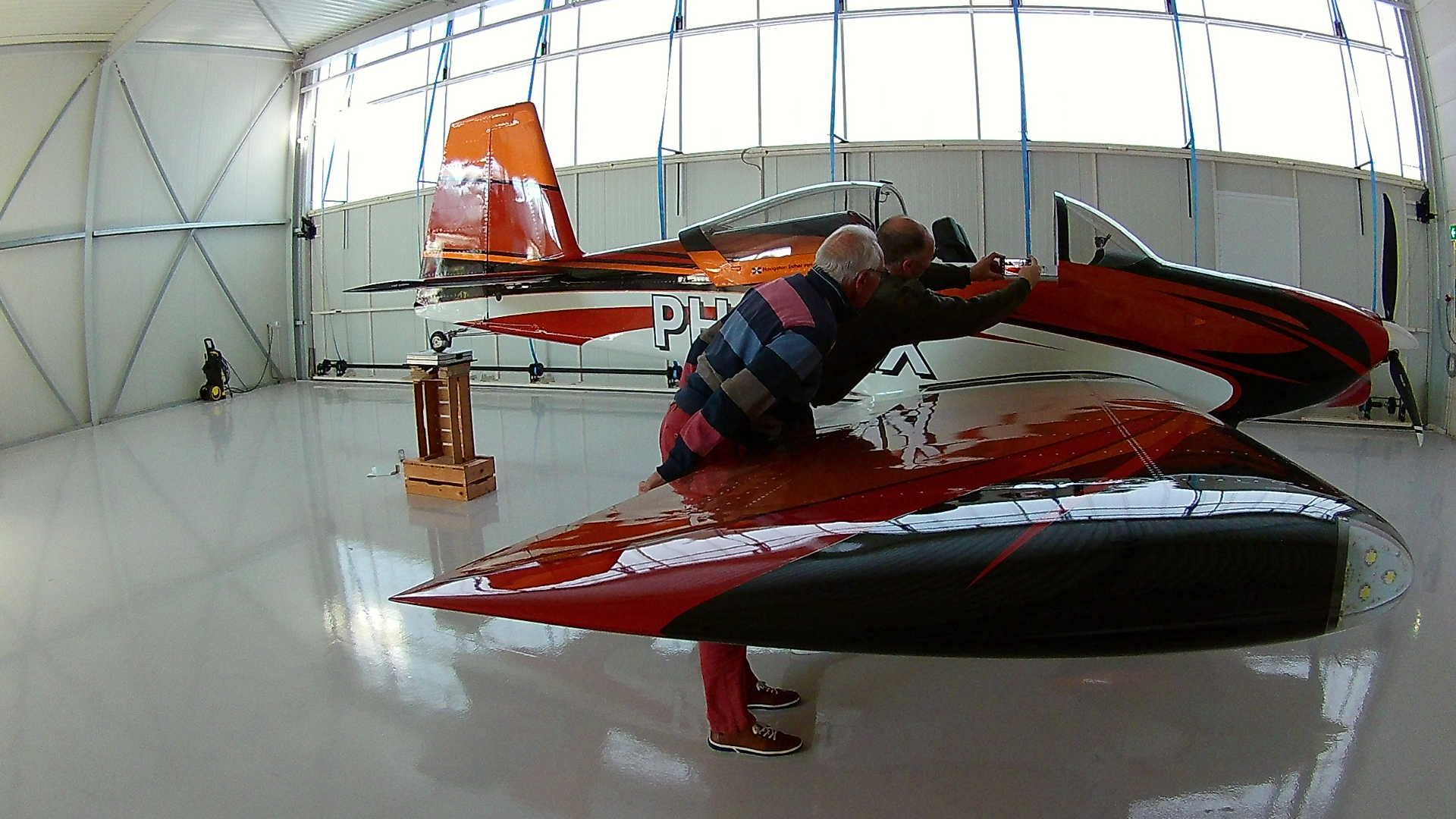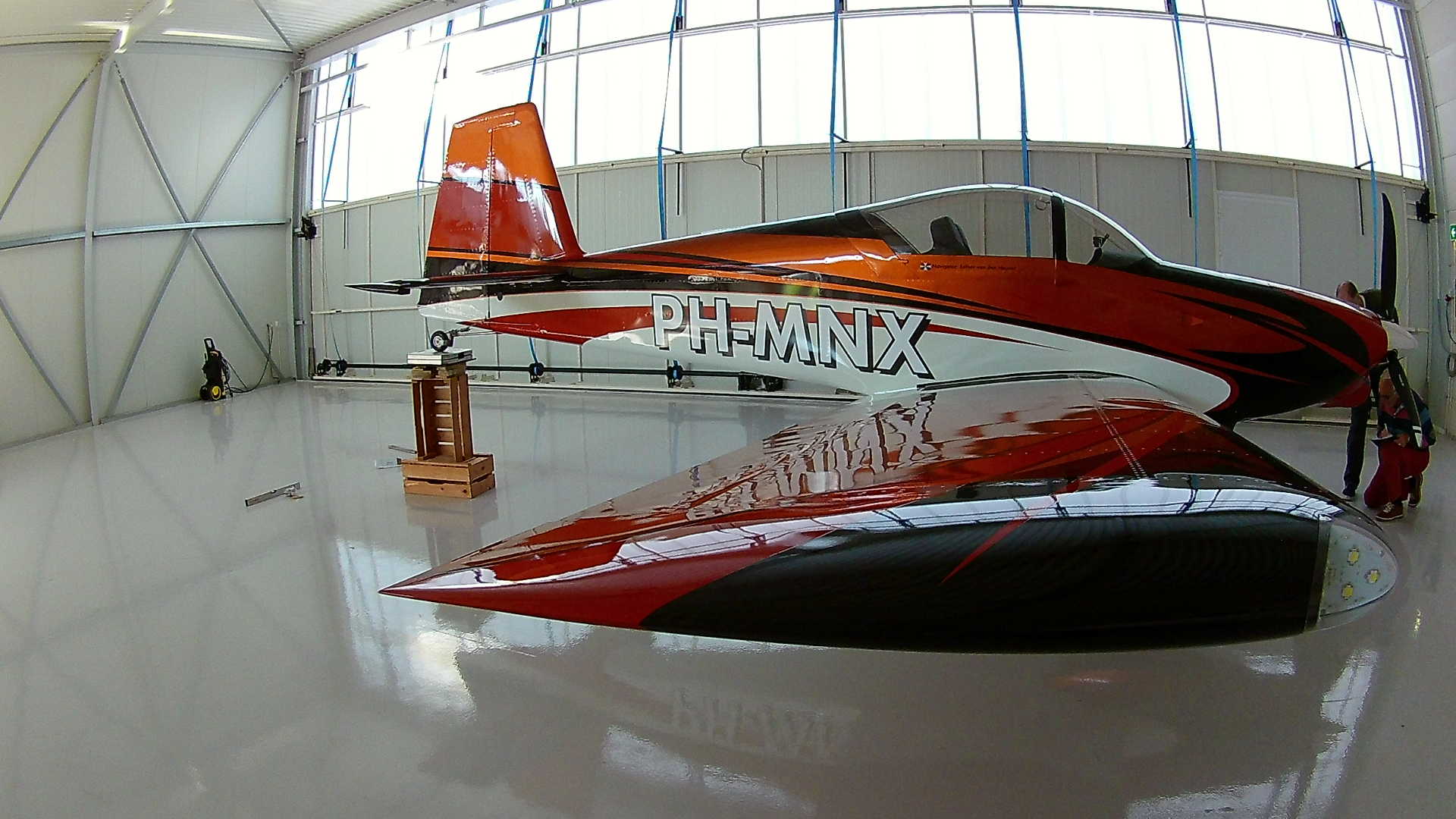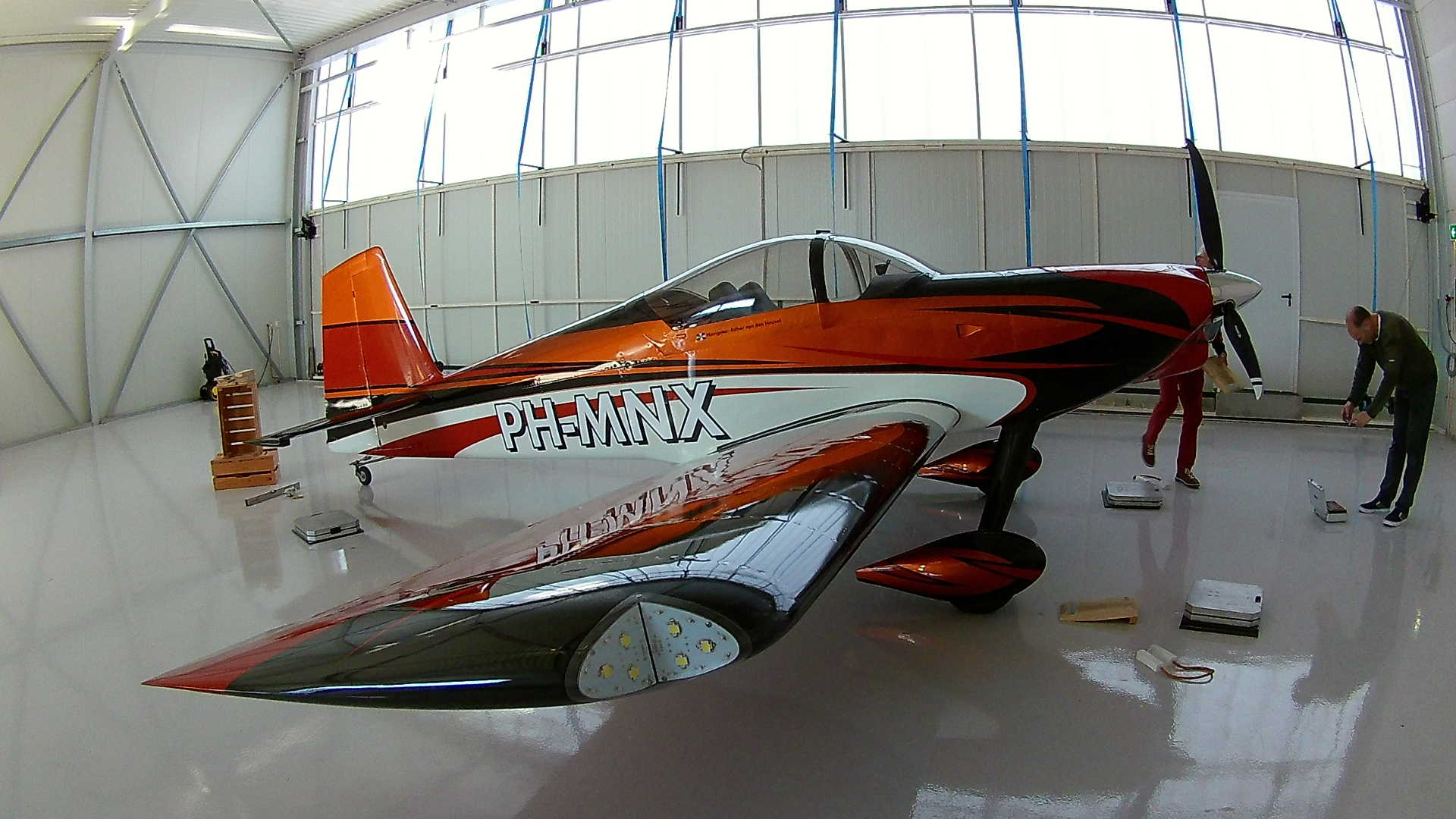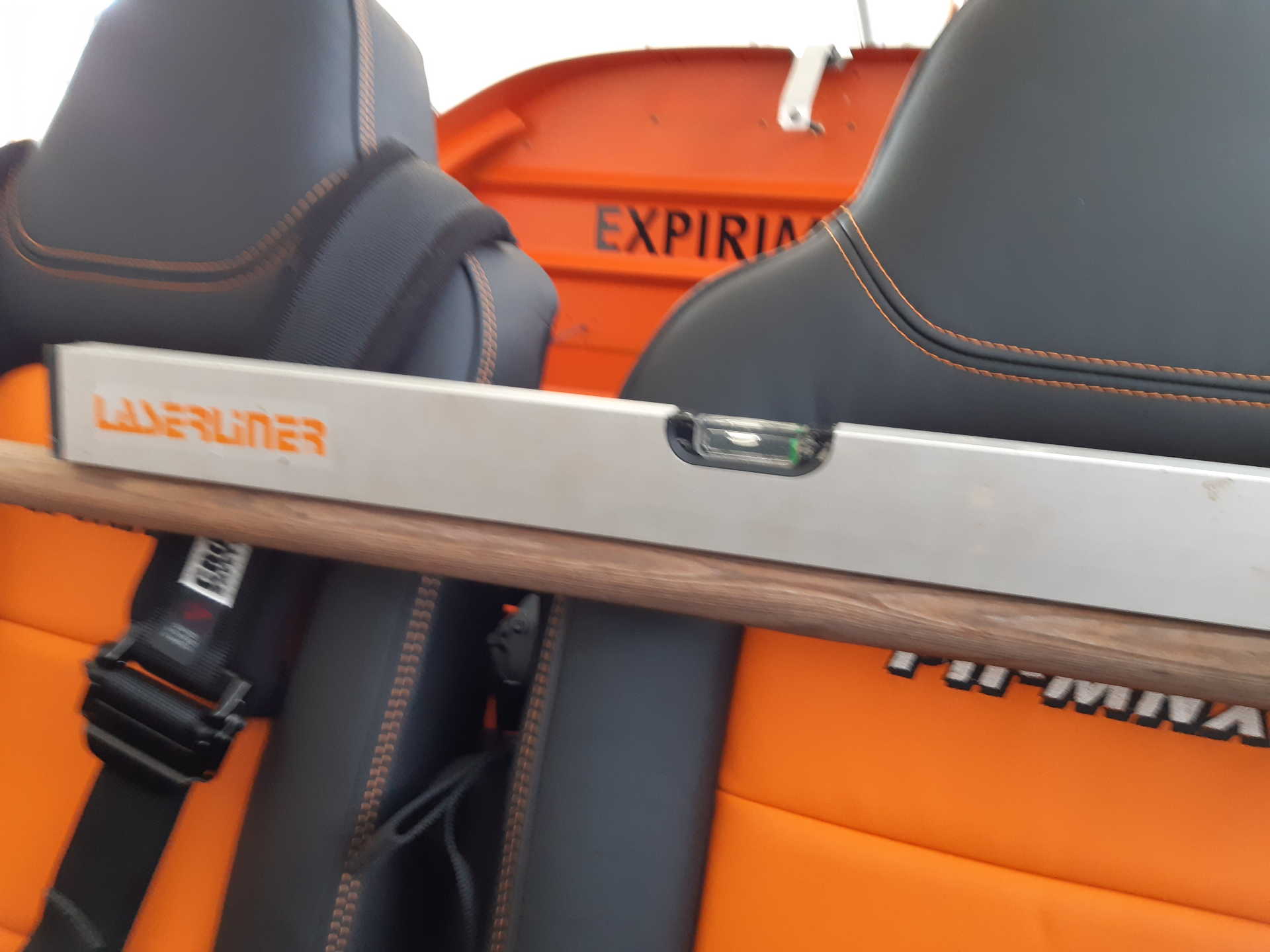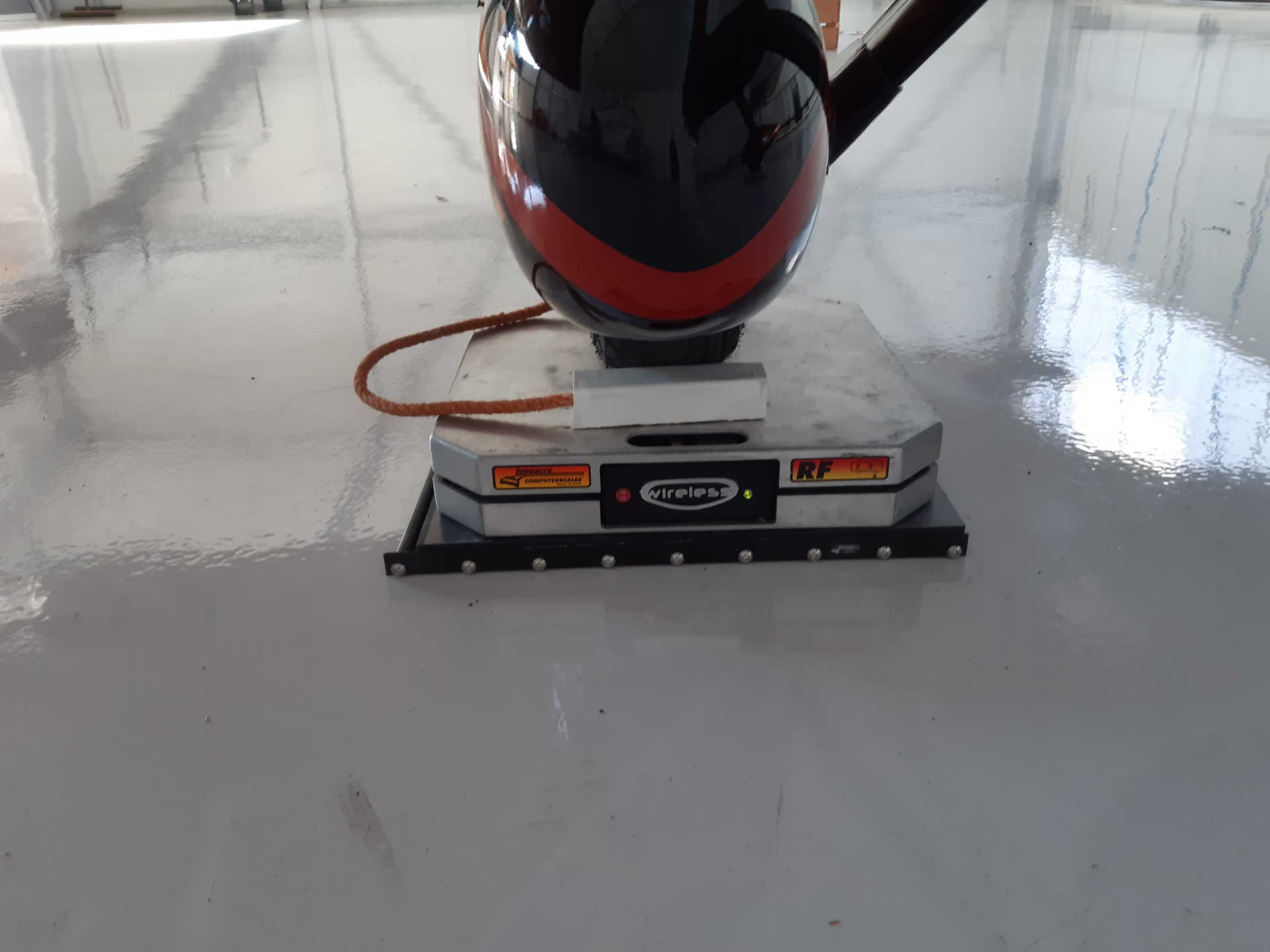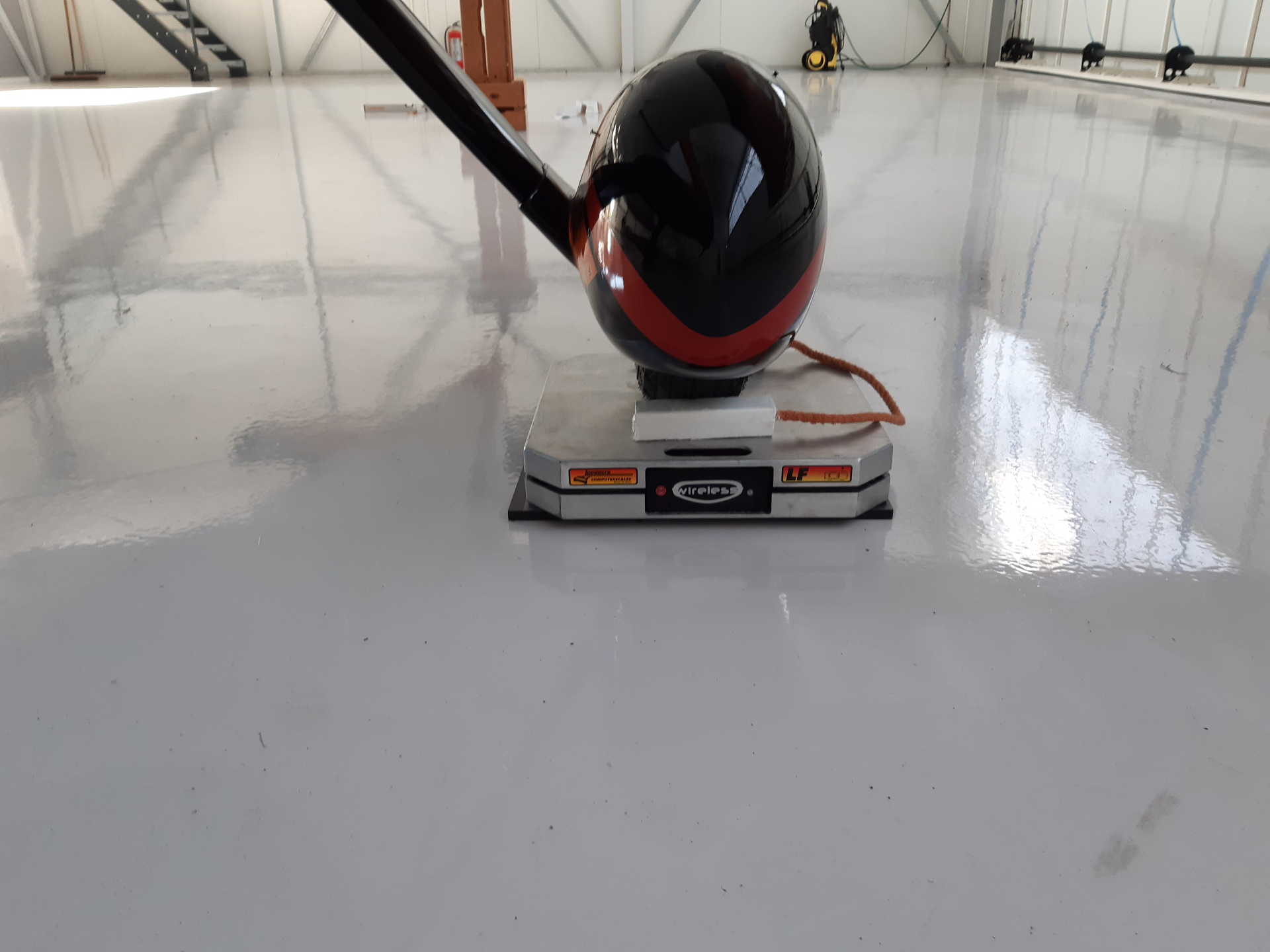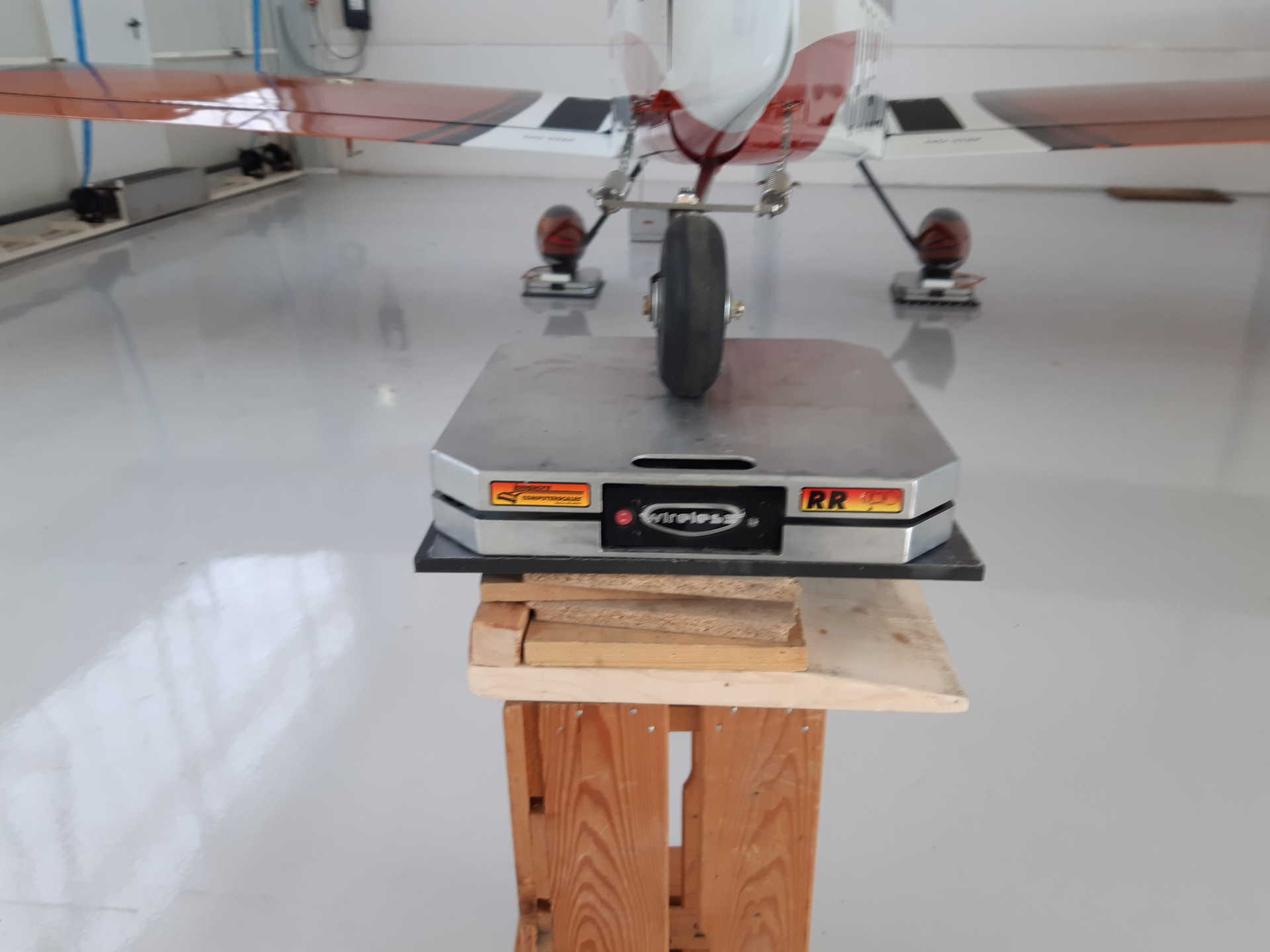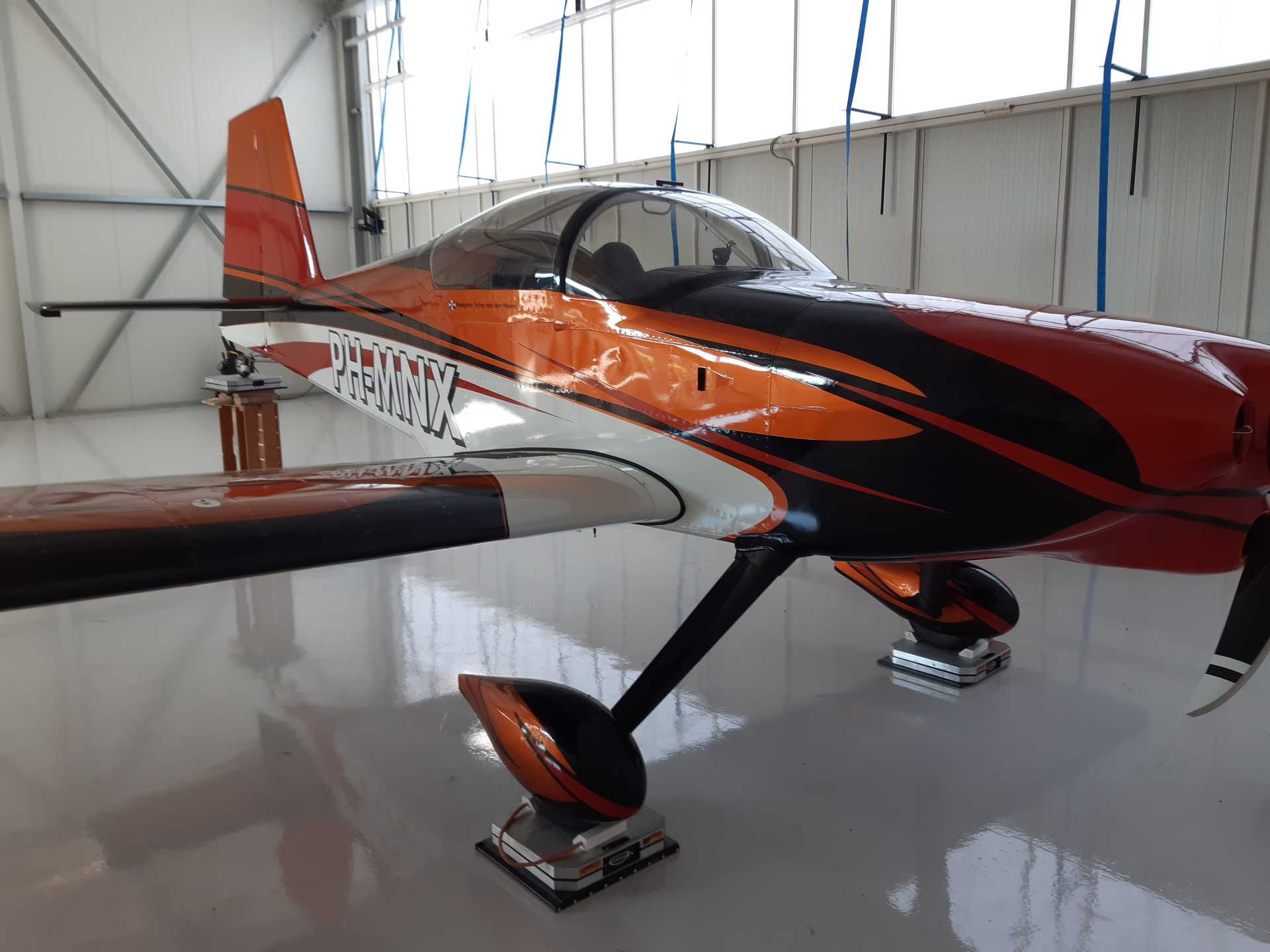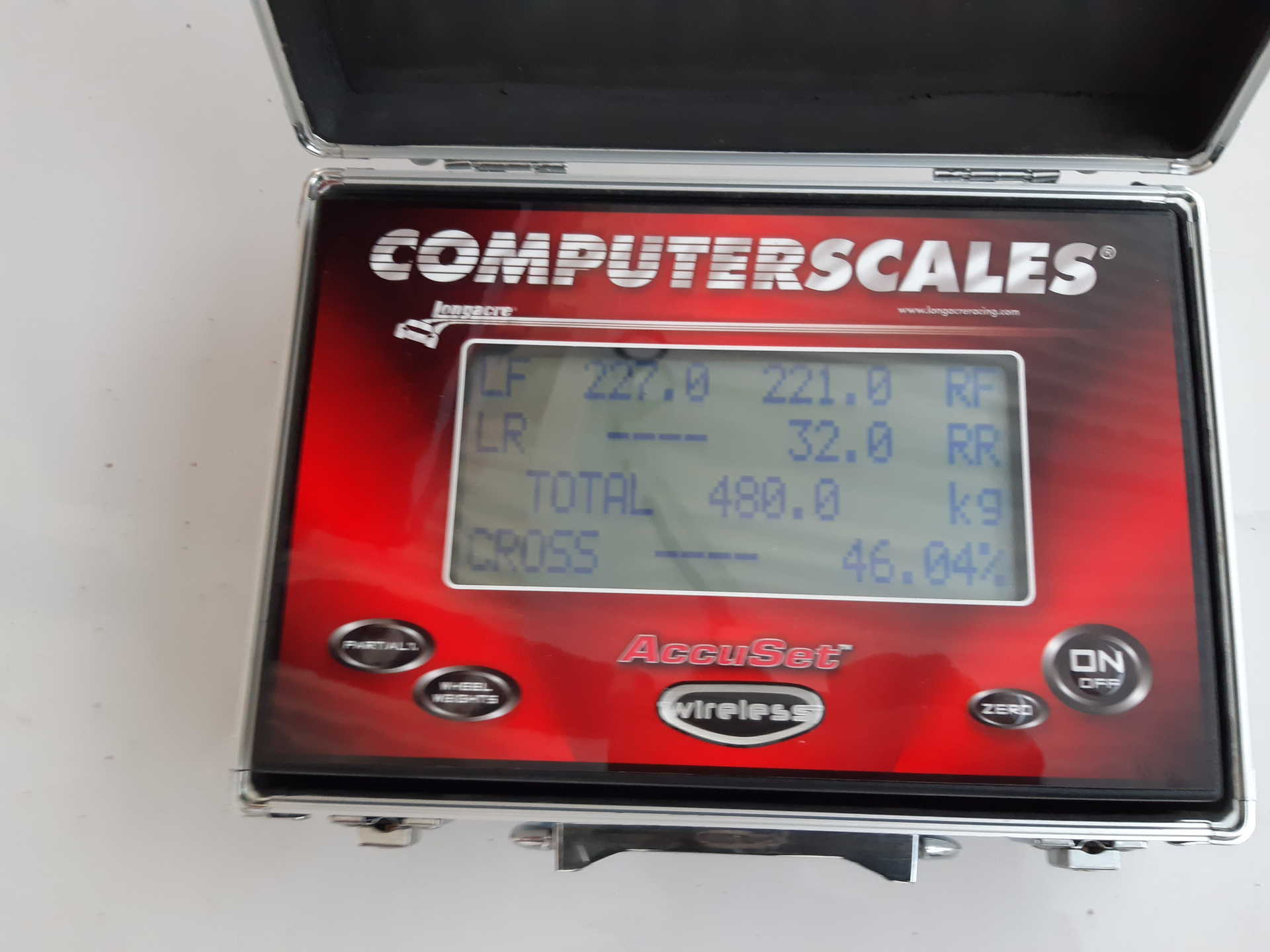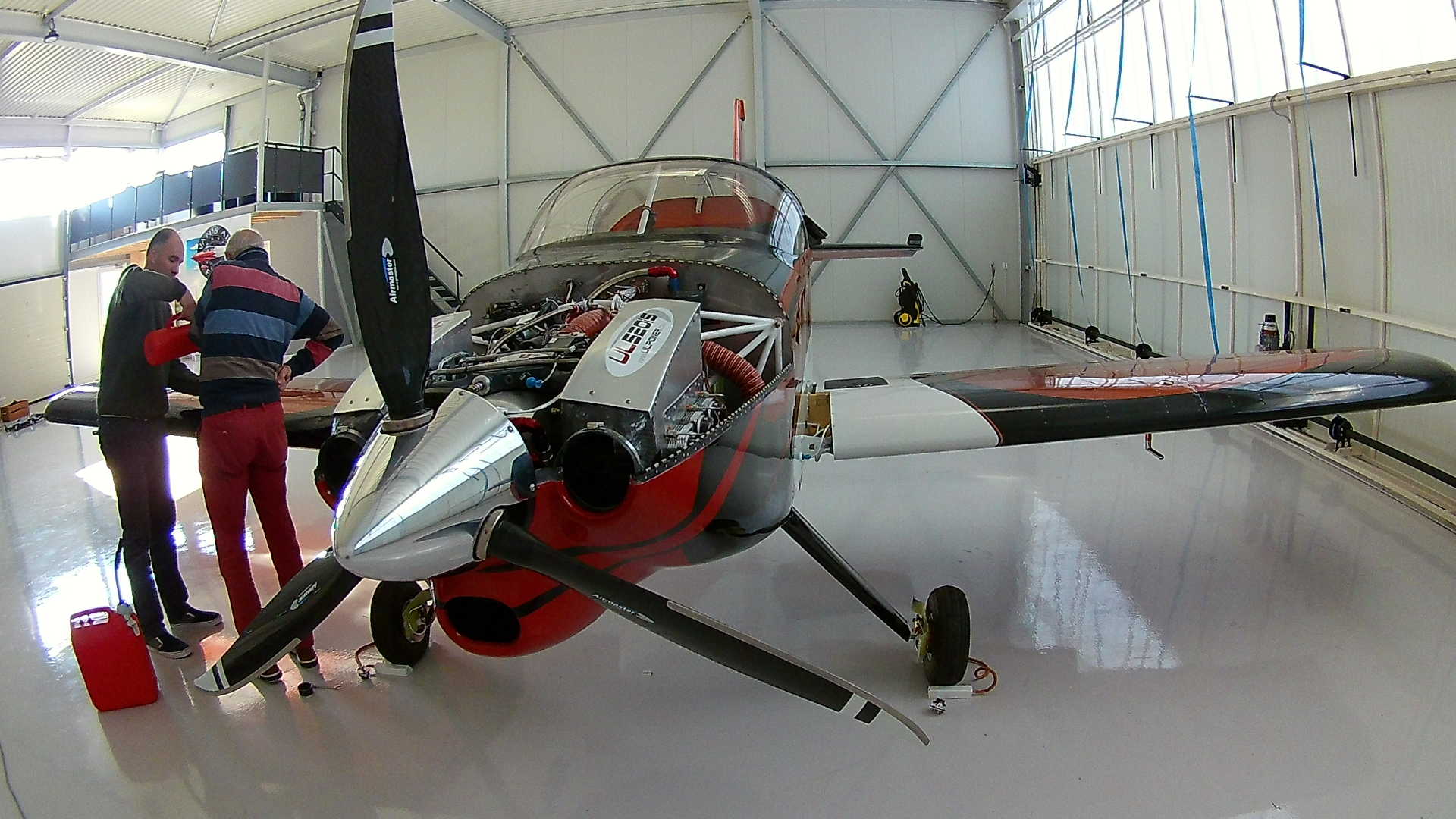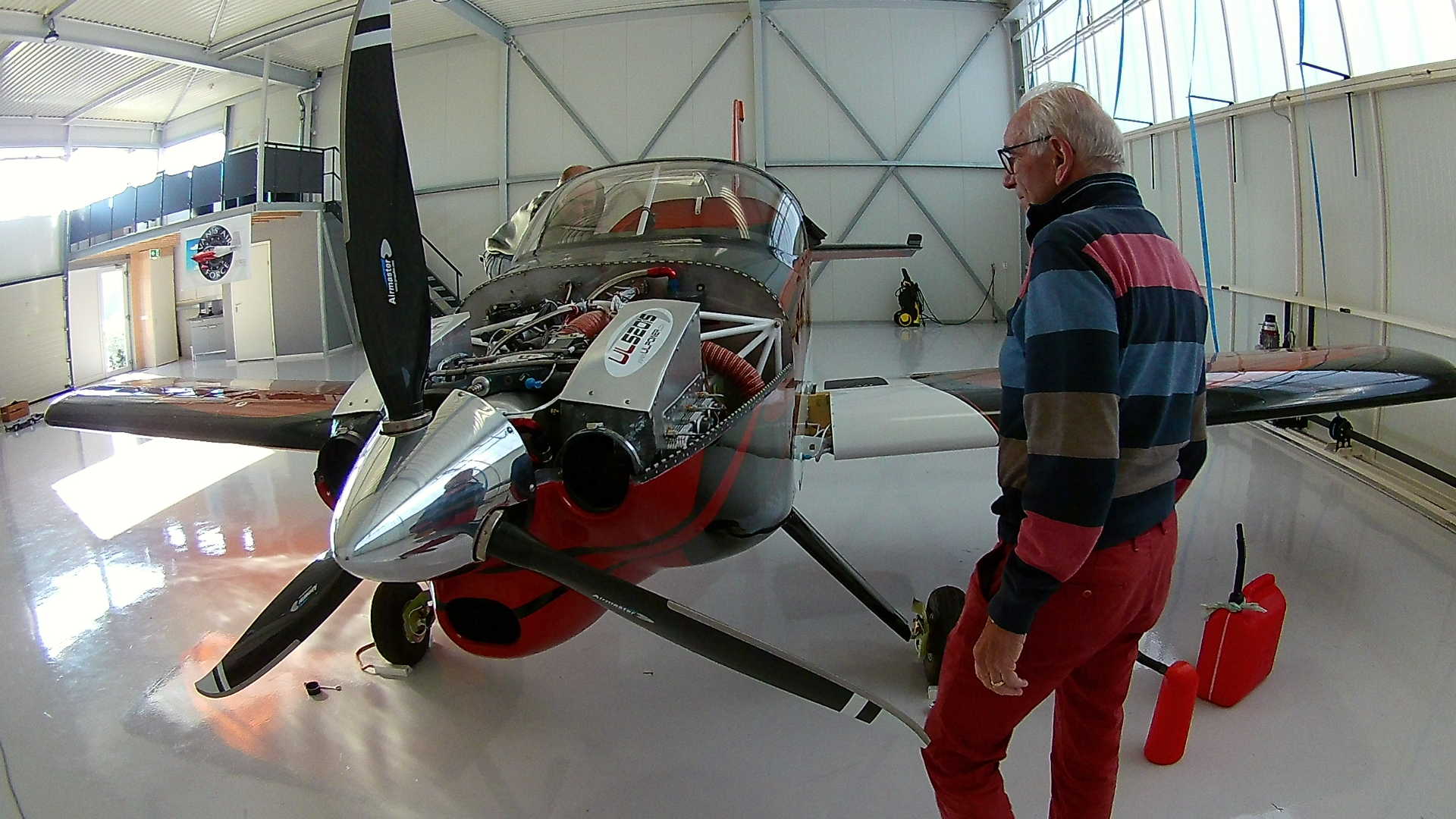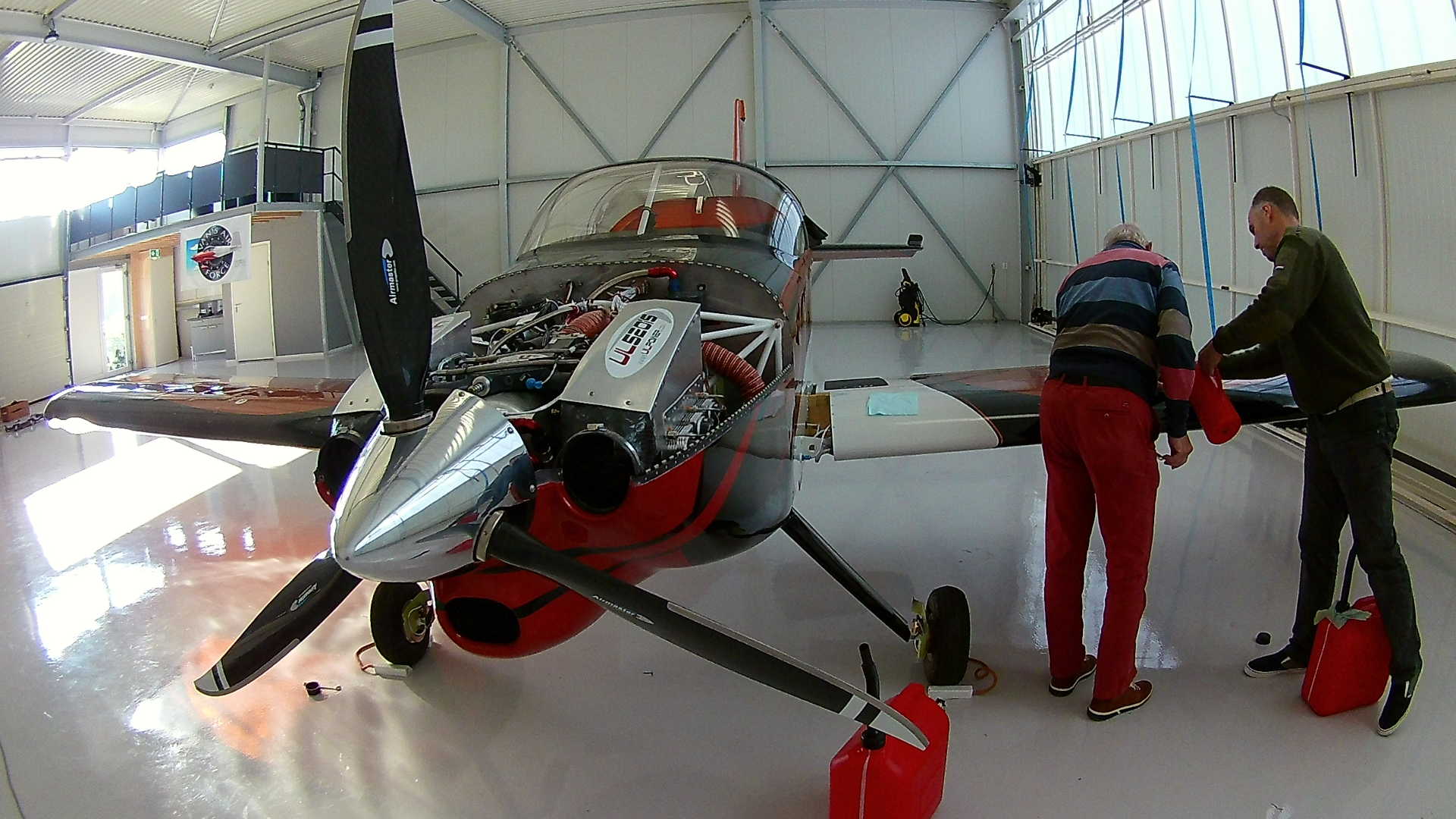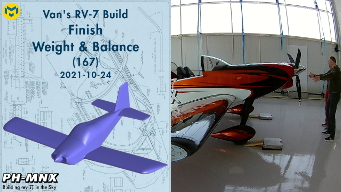The end inspection is done and we can now start with the airworthiness certificate documentation. The last chapter, before I can finish the Pilot Operating Handbook is the Weight and Balance measurements and the CG calculation.
My first idea was to place the RV at a distance from the wall, that represents the Datum. Turns out that is irrelevant.
Both determining the Arms (distances from Datum) and the Weights, must be done with the plane at level. This means the longerons must be level with the floor. I now (from building) that with two apple crates I’m very close.
I just need a few blocks, while my Dad checks the level.
Now I can check the distance from botch wings, to be sure that the plane is parallel to the wall, so all other measurements are ‘in sync’.
Now we use the laser measure tool to measure the distance from the tailwheel to the Datum. Since the laser is in an angle, I need to calculate the distance (the laser is the hypotenuse).
With all the distances, we can now put the plane on the scales. The right scale is on rollers, so side loading is not influencing the weighing.
Setting it level again with the scales under the main gears and the tail wheel.
RTFW
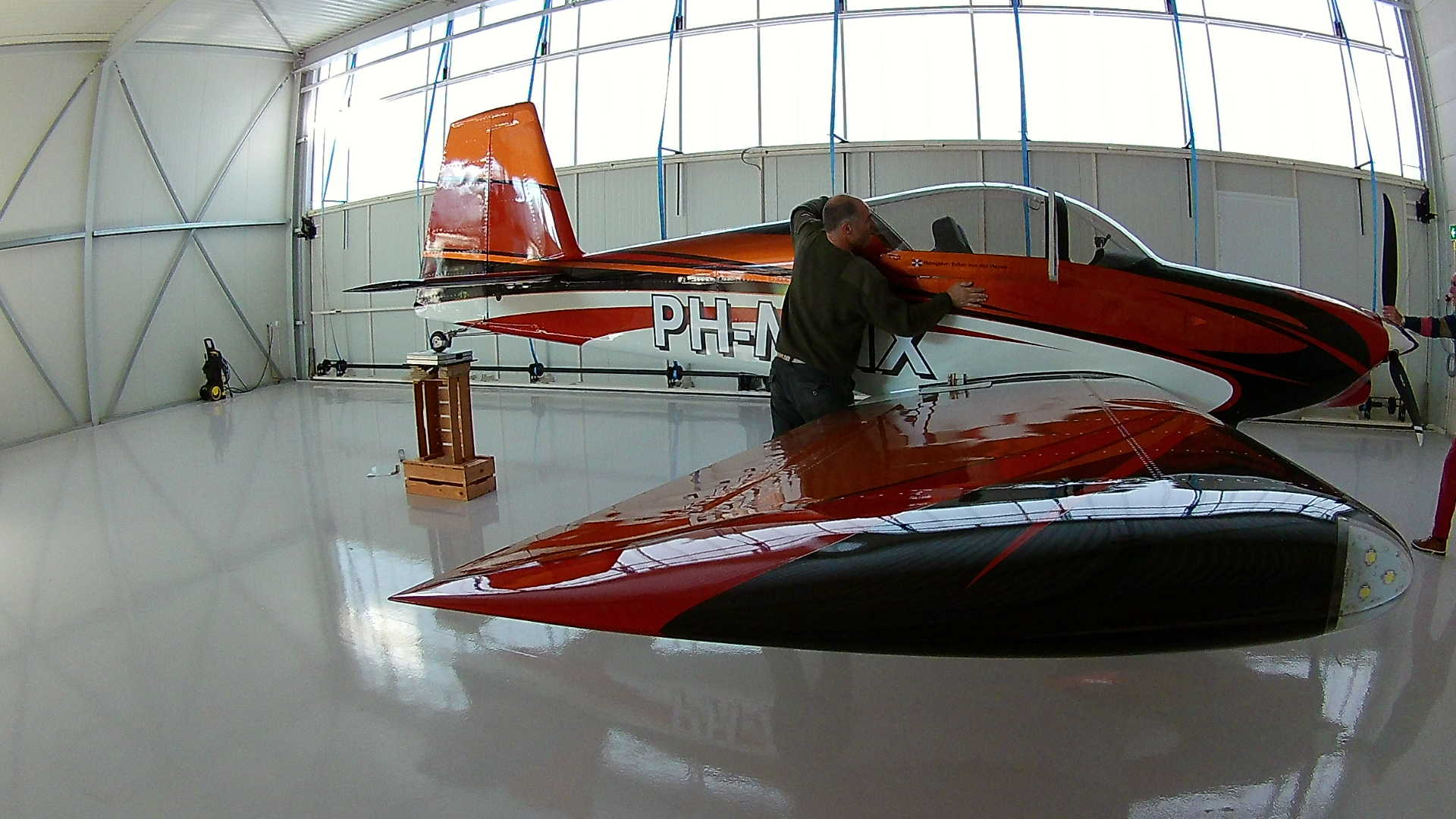
Closing the canopy (because it should be in flight-mode) and all the fuel is drained, only the ‘unusable fuel is still in there.
And there you have it! I didn’t initialize the scales and now my measurement is invalid. RTFM man, every time when I think ‘I got this’ I screw up!
So we can remove the plane and initialize the scales (1 minute of work, 30 minutes wasted). I take a picture of the initialization process (as evidence).
After positioning the plane on the scales again, we level it again both longitudinal and latitudinal.
Yes I know, my stickers are created by a dyslectic, so that will be corrected later.
The right main gear is nicely on the scale and the scale is blinking.
Same for the left main gear
and the tailwheel.
So this is the position for the weight.
And there you have it. 227kg left main, 221kg right main and 32kg on the tailwheel, total of 480kg. That’s what you get if you install a ULPower engine, it’s really light.
Now we are adding fuel to calibrate the fuel senders. We had to do this twice, because I don’t RTFM on how to calibrate.
Also I need to calibrate both the EMS and EFIS, because the fuel level indicators are each other backup. Every time we pour a few liters in and then we calibrate the instruments.
So now also for the left wing and we are done.
Time: 4 Hours, Rivets: 0/0 (2021-10-20)
Time: 5 Hours, Rivets: 0/0 (2021-10-24)
Time: 5 Hours, Rivets: 0/0 (2021-10-27)
Time: 4 Hours, Rivets: 0/0 (2021-10-31)
